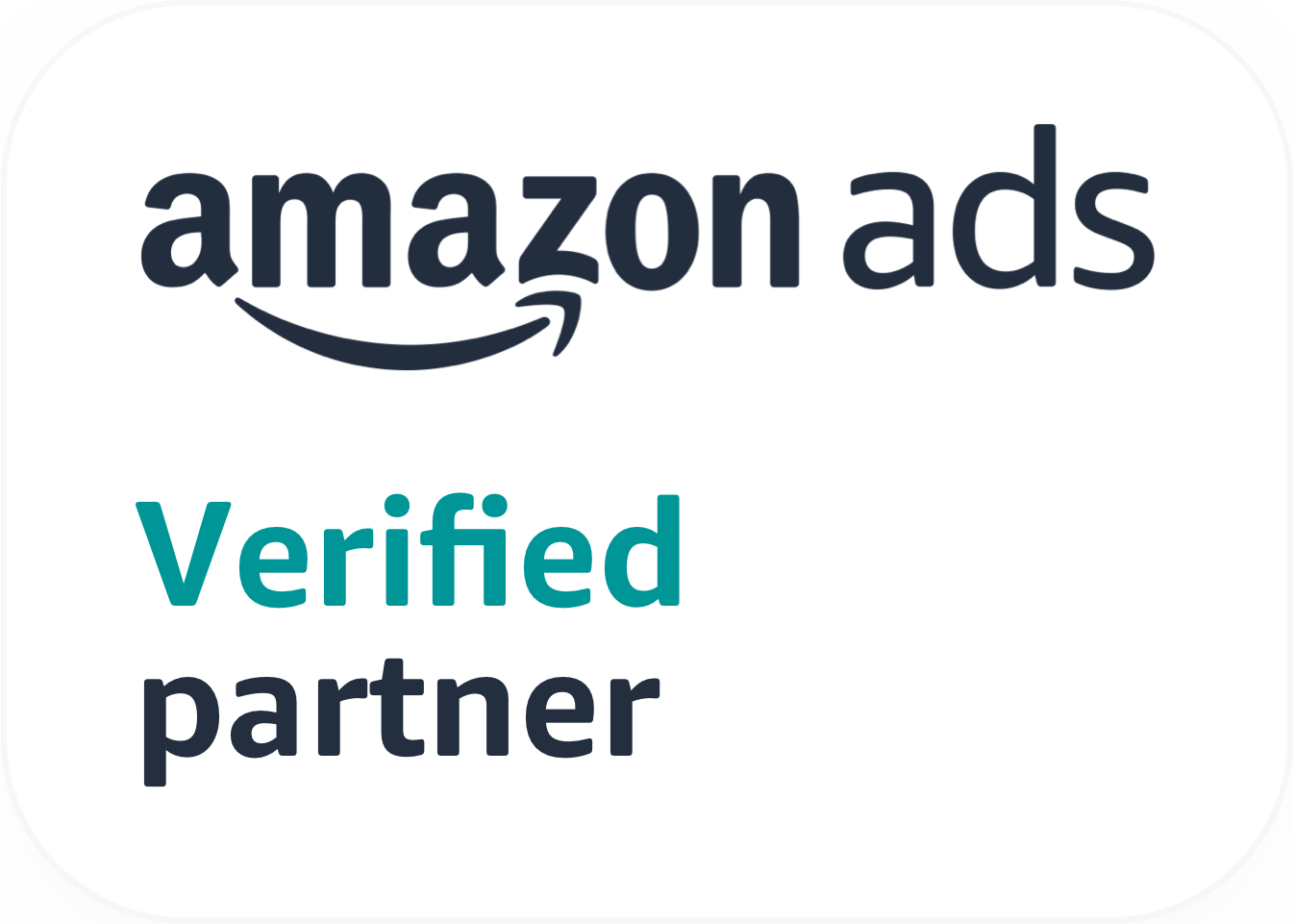Which Sales Model Fits Your Amazon Business? Vendor, Seller, or Hybrid Model?


We repeatedly hear from vendors who are considering terminating their long-term collaboration with Amazon as a vendor and switching to the seller program. However, manufacturers are usually not clear about when such a change makes sense and what advantages and disadvantages arise from it. In previous articles, we have already written about advantages for vendors and terminating vendor contracts. How a change to the seller model works, what needs to be considered, and what role the hybrid model plays in this, we want to answer in this article.
Amazon is currently making a kind of directional change in its collaboration with manufacturers and suppliers: Amazon's price demands are becoming tougher, while contacts and exclusive advantages (e.g., A+ Premium) are simultaneously becoming fewer. To better understand how this change came about, let's first look back and describe how today's situation and the handling of suppliers at Amazon came about.
Looking Back: Win-Win Situation for Vendors and Amazon
Amazon celebrates its 28th birthday this year. Looking at Amazon's corporate development in the press, it becomes clear how big Amazon has become. Hardly any manufacturer can pass by the leader in German e-commerce without having their products listed there. Since Amazon focuses on the end customer, collaboration with Amazon is always a challenge for manufacturers and merchants.
Before Amazon opened its German marketplace with Amazon Marketplace to sellers in 2000, it was only possible for wholesalers and manufacturers to sell on Amazon.de if they were directly approached by Amazon. Even today, manufacturers cannot simply register themselves as vendors in the Amazon system, but need an invitation from Amazon.
With the goal proclaimed at the time by Jeff Bezos to quickly maximize the selection of products available on Amazon, Amazon tried in the past to win over as many merchants and manufacturers as possible. For this purpose, Amazon purchased goods from many well-known brands on a large scale to offer them on Amazon. From a manufacturer's perspective, Amazon was thus one merchant among many who purchased goods at fixed conditions and ensured increasing sales.
Room for Price Negotiation
To be able to grow with the assortment to become the largest brand department store of all time, manufacturers were still granted generous room for maneuver in price negotiations. In contract negotiations with vendor managers, conditions and targets were renegotiated. Manufacturers could face adjustments calmly due to the pricing flexibility. The collaboration with Amazon was simple from a vendor's perspective and took place on equal terms.
The goods ordered by Amazon were delivered by the vendor and Amazon paid the agreed purchase price.
The start as a vendor went without problems: Amazon took care of product listing and product presentation after successful contract negotiations. The vendor didn't have to do much more than regularly deliver their goods to Amazon. Amazon also took care of advertising itself, placed advertisements, the platform was supposed to generate reach quickly.
With Amazon's further growth, sales increased equally for manufacturers and Amazon. Amazon's assortment grew and more and more manufacturers sold their goods to Amazon. From a vendor's perspective, Amazon still played a rather subordinate role, as a large part of the goods continued to be distributed through traditional sales channels.
Strategy Change: Amazon Tightens the Screws
Arriving in 2022, Amazon is in direct competition with other sales platforms such as Otto, Zalando, or Kaufland, but also with niche shops like Notebooksbilliger, Lidl, or thousands of Shopify shops that are increasingly trying to take away Amazon's share in e-commerce.
Additionally, Amazon as a price leader is under enormous pressure to defend this position. Not least, the previously largely deficit retail business of the retail giant is now demanding its return.
The result was a strategy change regarding offering and profitability: Not every article and every manufacturer must be represented in the catalog from Amazon's perspective. Amazon now demands ever more price concessions from its suppliers with each year to finance its own growth, maintain price leadership, and write black numbers in the retail sector. Brand manufacturers can observe this strategy change in various areas.
Vendor Contract Framework
The vendor contract framework is becoming increasingly complex. So Amazon demands new contract conditions for new services or those that were not previously required with each annual discussion. Large manufacturers can hardly avoid these conditions and at the same time have the problem of pushing through rising costs in production and logistics to Amazon in the form of price increases.
New manufacturers who are supposed to come on board are literally courted by Amazon. Numerous phone calls, emails, sometimes even personal meetings at the manufacturer create the impression of being able to negotiate with Amazon on equal terms.
Those who start with Amazon as a new manufacturer today are often not clear at the beginning of the collaboration about what specific requirements apply and what tasks will come to the supplier. Contract frameworks and conditions give no information about these tasks and are rarely critically questioned due to frequently lacking expertise. Individual wishes are usually not addressed at all in contract negotiations. The negotiating partner, a vendor manager, has clear target specifications and has little room for maneuver in interpreting the conditions. The discussions are tough and can only be negotiated in favor of the supplier with a lot of experience.
This repeatedly leads to vendors being dissatisfied with the achieved margin and wanting to renegotiate with Amazon in the course of further collaboration. But once the contract is signed, negotiations usually only run in one direction: in favor of Amazon. Support from an experienced consultant is useful here before contract conclusion. The signed contract is ultimately the basis for a long-term, growth-oriented collaboration with Amazon.
Various former vendor managers offer such consultations. They know their way around well, as they sat on the other side of the table for a long time.
Logistics
With the construction of new logistics centers, Amazon sets standards and defines new requirements for logistics. Due to this rapid growth, complexity also increases in all areas. Amazon must meet the exploding costs in logistics. The Vendor Manual (central rulebook for article delivery) is extensive and complex. Amazon increasingly relies on compensation payments from suppliers when delivery requirements are disregarded to keep logistics under control. No matter how hard manufacturers try - all requirements can rarely be met 100%. Contesting the resulting penalty payments is time-consuming and rarely successful. If vendors have not already priced in the penalty payments in previous contract negotiations and contractually restricted the payments, they must accept them grudgingly.
Vendor Contacts
With the increasing requirements and the constantly growing Amazon system, support pressure also increases among suppliers. While vendor managers were still reachable for manufacturers in the past, this is rarely the case today, as they have to look after hundreds of suppliers in parallel. Contacts who provided support during onboarding disappear seemingly without a trace after a few months. If a supplier doesn't bring relevant sales in their sales category, there's no more contact person. Additionally, Amazon has been cutting back vendor managers more and more lately, and contact intervals with suppliers are limited to a minimum. These missing contact persons make it difficult for suppliers to find competent solutions in the Amazon jungle in a timely manner when problems arise.
Rather, strategic contacts are created who are supposed to help place, for example, large advertising budgets and deals. Those who want strategic support can fall back on the Strategic Vendor Service, SVS for short, or the Amazon Vendor Service (AVS). These are Amazon employees who look after up to a dozen vendor accounts. These support services cost the vendor additional conditions. The price for these specialists is high and should be negotiated at the beginning of the collaboration.
Automation
To reduce its own costs and manage the enormous support effort, Amazon is increasingly relying on automation. With the help of the latest technical developments, algorithms, and artificial intelligence, more and more processes are managed by machines instead of people. At the same time, Amazon is relocating employees and entire services to low-wage countries and relying on centralization. Personal contacts are becoming increasingly rare and support requests are increasingly processed from abroad.
Selling Prices
While Amazon purchases goods from suppliers at a list price, price sovereignty lies entirely with Amazon. The price finding for vendor products also takes place automatically. In doing so, prices on other platforms are compared exactly. Amazon has set itself the goal of being a price leader. Amazon even goes so far as to sell products at a negative contribution margin for itself, just to keep customers on its own platform. This can promote price erosion and further tighten conditions.
Assortment
Amazon no longer orders the full assortment: Amazon looks more critically at the profit margins of the offered products and no longer tries to list every product in the catalog. If manufacturers can no longer meet Amazon's price expectations, "penalties" threaten: Individual products may no longer be approved for advertising, lose the Buy Box for non-Prime members, and are ultimately no longer reordered by Amazon (CRAP Out).
Operational Tasks
More and more operational tasks in daily doing come to vendors. Amazon is increasingly transferring more self-responsibility to suppliers. What is already everyday life for sellers in the self-management interface Seller Central is often only possible for vendors via detours through support. So the processes and tools in Seller Central are already fully designed to list and deliver new products as easily and quickly as possible, create variants, or change product data. But vendors face these tasks with often unexpected hurdles. So when creating and updating products in Vendor Central or delivering goods to Amazon, things often go wrong, which leads to listing data being displayed incorrectly on Amazon or Amazon returning goods or demanding penalty payments. Or Amazon transfers end customer support to the vendor, even though Amazon is the seller of the goods and should provide the support.
Lack of Transparency
Those who sell as vendors receive only very limited insights into sales figures from Amazon. Although orders are given by time periods, vendors do not receive concrete information about customer data (available to sellers). In the meantime, vendors now have access to the more detailed variant called "Brand Analytics" (formerly ARA Premium) in addition to the previously provided, very limited analysis tool ARA Basic. Nevertheless, many things remain Amazon's secret, e.g., which product was bought when or with which search term, as one is used to from Google for one's own shop. Amazon also hardly discloses data about the advertising cost subsidies (WKZ) provided. What services Amazon provides with the money in detail often remains unclear.
For some vendors, few or several of the mentioned points may apply. Some manufacturers then stand "with their backs to the wall" and are no longer able to go along with Amazon's price demands. The collaboration is then no longer perceived as one on equal terms by vendors. With lower Amazon sales, the supplier becomes increasingly unattractive to Amazon. From the vendor manager's perspective, he is also no longer a significant sales driver. Due to the enormous number of customers to be looked after, the vendor manager can only pay minimal attention to the supplier. The vendor thus loses their contact person and is no longer able to communicate directly with Amazon. Then inquiries often remain unanswered for weeks, problems unsolved, which increasingly creates frustration among suppliers. In the end, Amazon finally also loses attractiveness for the vendor.
Does the Alternative Lie in the Seller Program?
The complexity of strict rules and the logistical requirements of the vendor system are causing more and more manufacturers to capitulate. Additionally, a feeling often arises that control over one's own Amazon business is increasingly slipping away. This subjective loss of control makes manufacturers look attentively at the seller program, which promises more control with about the same effort. Due to clear processes, price sovereignty, Seller Academy, seller forums, or extensive specialist literature as help offerings, the seller existence appears tempting and "learnable".
With the creation of the marketplace for merchants, Amazon transferred the entire product responsibility in a largely automated self-management system to the seller. Manual intervention by Amazon is not provided for in this system. Amazon only offers help for self-help here. This is also the reason why Seller Central is created quite differently in structure and functionality than Vendor Central.
Sellers have extensive possibilities compared to vendors to edit content elements independently at any time (provided writing rights are available for the respective article). The approval processes usually run without review by Amazon employees. This leads to sellers enjoying significantly more freedoms compared to vendors in the design of product texts. More on this in the further course of this article.


